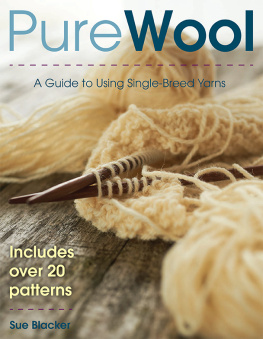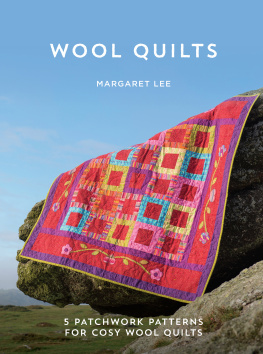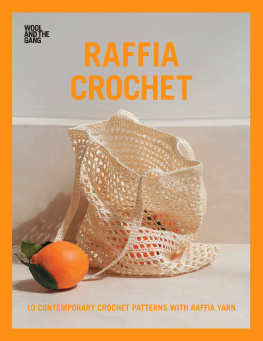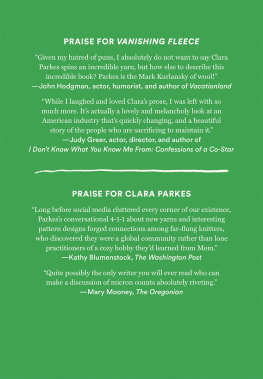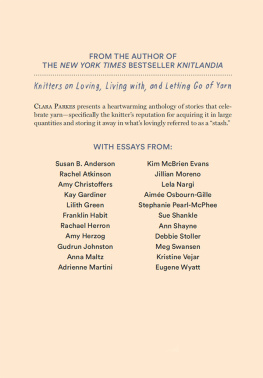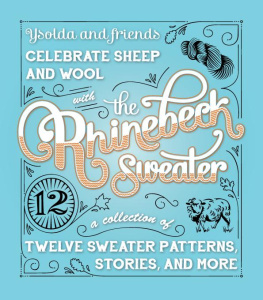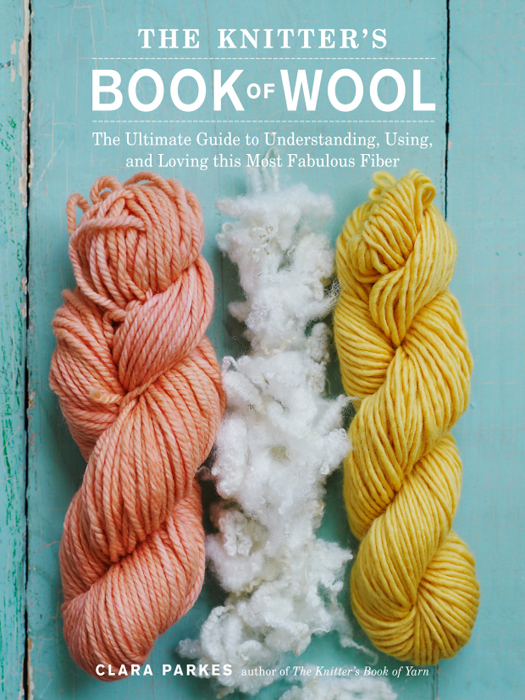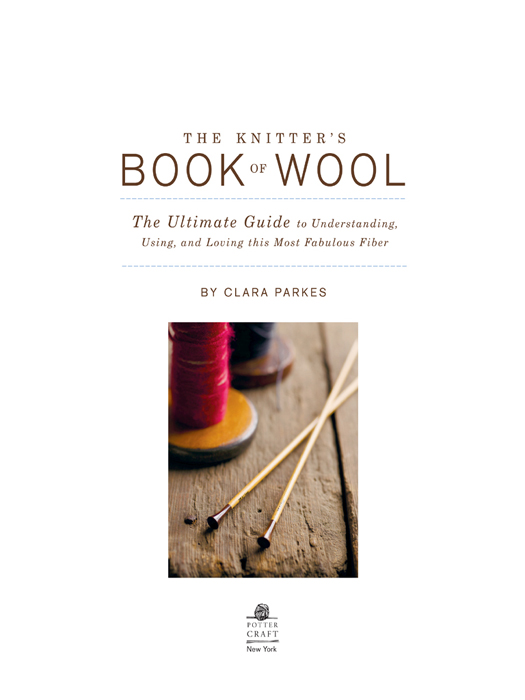Copyright 2009 by Clara Parkes
Photography 2009 by Potter Craft
All rights reserved.
Published in the United States by Potter Craft, an imprint of the Crown Publishing Group,
a division of Random House, Inc., New York.
www.crownpublishing.com
wwww.pottercraft.com
POTTER CRAFT and colophon is a registered trademark of Random House, Inc.
Library of Congress Cataloging-in-Publication Data
Parkes, Clara.
The knitters book of wool the ultimate guide to understanding, using, and loving this most
fabulous fiber / by Clara Parkes. 1st ed.
p. cm.
Includes index.
eISBN: 978-0-307-58699-5
1. KnittingPatterns. 2. Wool. I. Title.
TT825.P365 2009
746.432dc22
2009013787
Design by Tara Long/Dotted Line Design
Front cover and interior photography by Alexandra Grablewski
Illustrations by Kate McKeon
Photography by Frans Lemmons/Getty Images
Photography by Jorgen Larsson/Nordic Photos/Getty Images
Thanks to the Craft Yarn Council of America (www.yarnstandards.com)
for their Standard Yarn Weight System chart, which appears .
v3.1
CONTENTS

What Is Wool?
From Pasture to Pullover
Turning Wool into Yarn
Wool 101: Quick Tips for Reading
a Generic Wool Yarn
Meet the Breeds
Plays Well with Others
Patterns
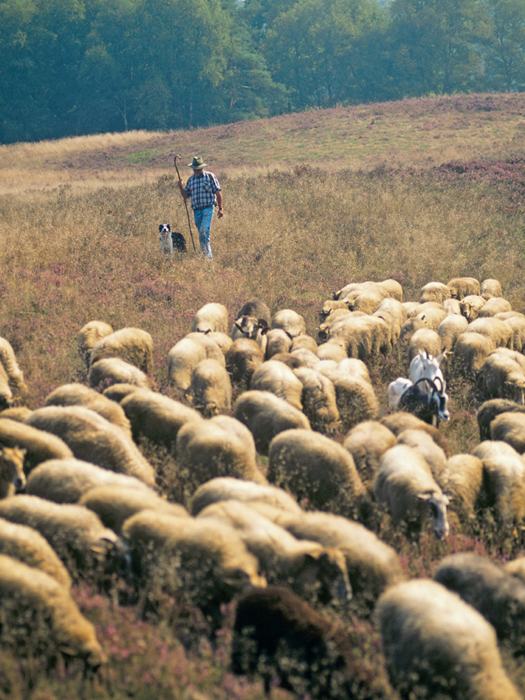
Preface
I have always loved woolI mean really and truly loved it, like Claude Monet loved his Giverny and Julia Child loved her butter. Discovering a new wool yarn, smelling it, touching it, dreaming of what I can do with it, knitting and washing a swatch and seeing how it transforms... those things make me feel complete and fulfilled.
But there would be no wool yarn were it not for the hard-working shepherds who take such pride in their flocks and fleeces. Shepherds sleep little during lambing season, their animals are never far from their thoughts, and they often work two jobs just to keep the farm going.
And there would be no wool yarn were it not for the ever-vigilant sheepdogs, and guard llamas and donkeys; the shearers who labor under extremely trying conditions; and the mill workers, who careI mean really careabout each bale of wool that passes through their hands.
To be able to honor this special material and all the people who bring it to us has been like getting to live in the worlds largest candy shop after closing time. Over many months Ive opened every single jar, sampled each sweet confection on the shelves, and even peeked at the recipes in the back room. Now comes the fun part, when I finally get to unlock the doors, switch the sign to Open, and share all my discoveries with you.

Introduction
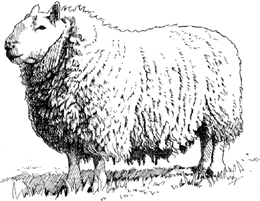
Imagine if all the wine in the worldred and white alikewere mixed together and sold as generic wine. Think of how many centuries of craftsmanship and flavor would be lost, and how mediocre it would taste compared with how it would taste if the grapes had been kept separate or selectively blended. Such an act would be almost unthinkable in the food world. But in the knitting world, just as much nuance is lost every day when flat, bouncy, long, short, matte, and lustrous fibers from ancient and modern sheep breeds alike are bundled together and sold as generic wool yarn.
Contrary to what those yarn labels may suggest, there is no generic, one-size-fits-all wool, just as there is no generic one-size-fits-all sheep. In fact, more than 200 distinct sheep breeds exist today, each growing unique fibers. Sometimes were given a glimpse of what lies within a wool yarnusually with the mainstream Merino or perhaps the occasional Shetland or Icelandic woolsbut such occasions are rare and represent only the tip of a large and sorely neglected iceberg.
Things are starting to change. Just as the food world is moving away from large-scale monoculture toward locally produced artisanal products, the knitting world is embracing a return to the local and artisanal. Sheep farms, spinneries, and large yarn companies alike are producing new yarns with words like Bluefaced Leicester, Columbia, Cormo, and Rambouillet on the labelswords that represent actual sheep breeds with diverse kinds of fiber. As each new name appears on our skeins, we need to step back and learn more about what those names actually mean. And thats exactly what I set out to do in this book: translate the vast world of sheep and their wool into the language and context of knitting. The next time you discover a new skein of wool, whether it is breed-specific or not, I want you to have a good idea where it came from, how its likely to behave, and what you should do with it.
Why? Because sheep can grow different types of fibers that are ideally suited for different kinds of projects. Some are softer than others. Some are slinky, some are crisp and spongy, some are so rugged and durable you could build a house out of them (and people do). Knowing the distinct personalities of wool fibers ahead of time will help you create a happy marriage between yarn and project.
We begin with the fundamentals: What is wool? What is this magical material made of, how does it get off the sheep, and how is it transformed from a jumbled mass of dirty fluff into a gorgeous yarn that so tempts us at our local yarn store (LYS)?
The answers to these questions prepare us for the next step in our journey: meeting the sheep breeds that provide their fabulous fiber. For the purposes of this book, Ive grouped breeds into five high-level categories on the basis of their shared backgrounds and/or fiber characteristics. Youll learn more about how to identify and use the fibers in each category, and youll even meet some of each categorys most notable wool-growing sheep breeds.
What about the many wool yarns that also have other fibers blended in? We go there, too. Youll learn why certain fibers tend to be mixed with wool, what they add to the yarn, how these qualities may vary depending on the percentage of fibers in the blend, and what other fibers can also give you similar results.
And finally, the fun part: we get to grab our needles, cast on, and start playing with these different wools for ourselves. Ive assembled a host of patterns that let you experience everything wool has to offerpatterns that let you play with


